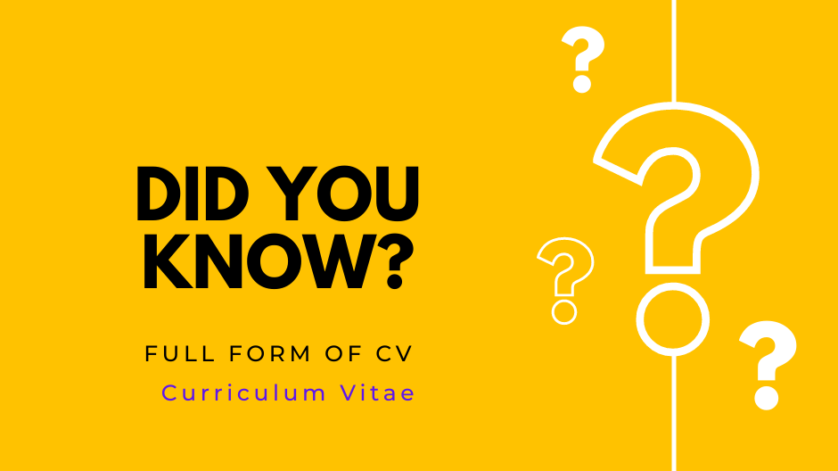CV Full Form
A Curriculum Vitae, commonly known as a CV, is a document that outlines an individual’s educational and professional background, as well as their skills, achievements, and experiences. A well-crafted CV can be the key to securing job interviews and job offers, making it an essential tool for anyone who is seeking employment.
The purpose of a CV is to showcase an individual’s qualifications and suitability for a particular role or position. This means that the CV should be tailored to the job or industry that the individual is applying for. The structure and content of a CV can vary depending on the country, industry, and specific requirements of the job, but there are some key elements that should be included in every CV.
The first section of a CV should include personal information, such as the individual’s name, contact details, and professional profile or summary. This section should be brief and provide a snapshot of the individual’s skills, achievements, and experience. It should also highlight the individual’s career goals and objectives.
The second section of a CV should focus on the individual’s education and qualifications. This section should list the individual’s degrees, diplomas, and certifications, as well as any relevant coursework, training, or professional development. It should also include the dates of graduation, the name of the institution, and any honors or awards received.
The third section of a CV should highlight the individual’s professional experience. This section should provide a chronological overview of the individual’s work history, starting with the most recent position. Each job entry should include the job title, company name, dates of employment, and a brief description of the responsibilities and achievements. It is important to quantify achievements and provide specific examples of how the individual contributed to the success of the company.
The fourth section of a CV should focus on the individual’s skills and abilities. This section should include both hard and soft skills, such as technical proficiency, communication skills, teamwork, and leadership. It should also highlight any language proficiency or other relevant skills, such as project management, marketing, or sales.
The fifth and final section of a CV should include any additional information that may be relevant to the job or industry, such as volunteer work, professional memberships, or publications. It should also include references or contact information for references, although it is generally not necessary to include these in the initial CV.
When crafting a CV, it is important to keep in mind the specific requirements of the job or industry, as well as the preferences of the employer. The CV should be well-organized, easy to read, and free of errors or typos. It should also be concise and to the point, focusing on the most relevant information and achievements.
A CV is a crucial tool for anyone who is seeking employment. It should showcase an individual’s education, qualifications, professional experience, skills, and achievements in a clear and concise manner. By tailoring the CV to the job or industry, and by focusing on the most relevant information, an individual can increase their chances of securing job interviews and job offers.

